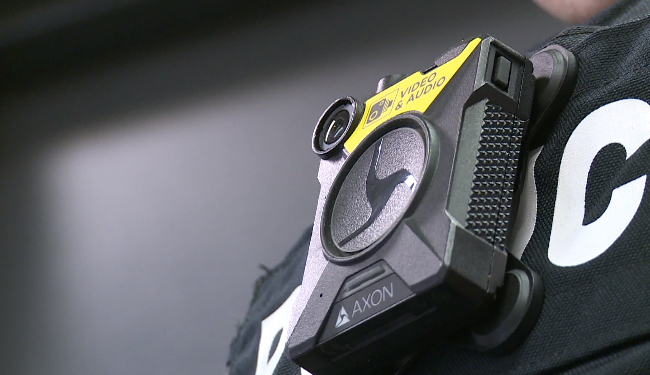Data collected and analyzed from a pilot project which saw Guelph Police Service members wearing body-worn cameras resulted in overwhelming support, according to research analyzed and presented by Alana Saulnier, assistant professor of sociology from Queen's University as well as the surveillance studies centre deputy director at the university.
The project launched on Sept. 1 in 2020 and ran through until the end of August this year, giving it a full-year trial.
When the pilot project began, Saulnier worked at Lakehead University, where she coordinated the criminology program as an assistant professor in interdisciplinary studies.
The draft report was presented during the Guelph Police Services Board general meeting on Thursday.
“There is a substantial body of research demonstrating generally that the general public is highly supportive of police adoption of body-worn cameras,” said Saulnier. “We’re talking dozens of studies that demonstrated this at this point throughout the western world. This sentiment arguably extends beyond being positive to actual demand. It's becoming a strong expectation that police should be wearing body-worn cameras.”
Collecting data traffic stop experiments, media experiments and a survivor survey, the studies showed overwhelming support for body-worn cameras on police officers and favoured an increase in police budgets to equip officers with body-worn cameras.
The traffic stops experiment saw traffic officers randomly assigned to use a body-worn camera on a shift-by-shift basis.
Traffic officers invited all motorists stopped to complete a survey about their experience.
In total, 131 people participated with an 84 per cent favourability for body camera adoption and 72 per cent supported a budget increase to pay for body-worn cameras.
The camera use was associated with improvements in perceptions of police legitimacy in general and willingness to cooperate with the police.
The media experiment was an online public opinion survey with exposure to positive body-worn camera footage experimentally manipulated.
The experiment found 77 per cent of people favoured body-worn camera adoption and 73 per cent supported a budget increase to pay for the equipment.
According to the report, when people have low pre-existing trust in police and are exposed to positive body-worn camera videos, their evaluations of specific encounters with police and willingness to cooperate with police improve.
The survivor survey had the highest percentage of favourable support at 87 per cent.
Data was collected in an online survey from women who self-identified as survivors of sexual assault and/or intimate partner violence were recruited with the assistance of relevant partners across Ontario.
A member survey found both civilian and sworn members’ responses indicate overall satisfaction with the Guelph Police Services rationales for body-worn camera adoption.
Support was linked to how useful body-worn cameras can be as a policing tool, and the extent to which they are perceived as an invasive monitoring tool.
The method of data collection saw 23 police officers assigned to use a body-worn camera on a randomized shift-by-shift basis.
In total, 8,848 unique occurrences occurred between Sept. 1, 2020, and June 30, 2021, that involved members of the pilot project, with 4,234 occurrences happening during shifts police officers had body-worn cameras on.
Footage was more likely to be produced when the call for service was officer generated or a traffic stop.
According to the report, the body-worn cameras assignment did not produce significant effects, however, the body-worn camera activation produced some noteworthy significant effects including an increase in clearance time for overall calls for service and traffic stops, a moderate increase in the odds that a call for service would generate a report and moderate increase in the odds that overall call for service and traffic stops specifically would generate a ticket.
“A rationale for the Guelph Police Services adopting body-worn cameras is to provide information to the effectiveness of service procedures and training,” said Saulnier. “We were trying to think about the specific rationales that drove the service to consider body-worn cameras in the studies we developed.”
Saulnier said existing literature shows police officers lean toward supporting the use of body-worn cameras, and that officers’ attitudes toward wearing cameras improves following use.
A final decision will come at a later date.
